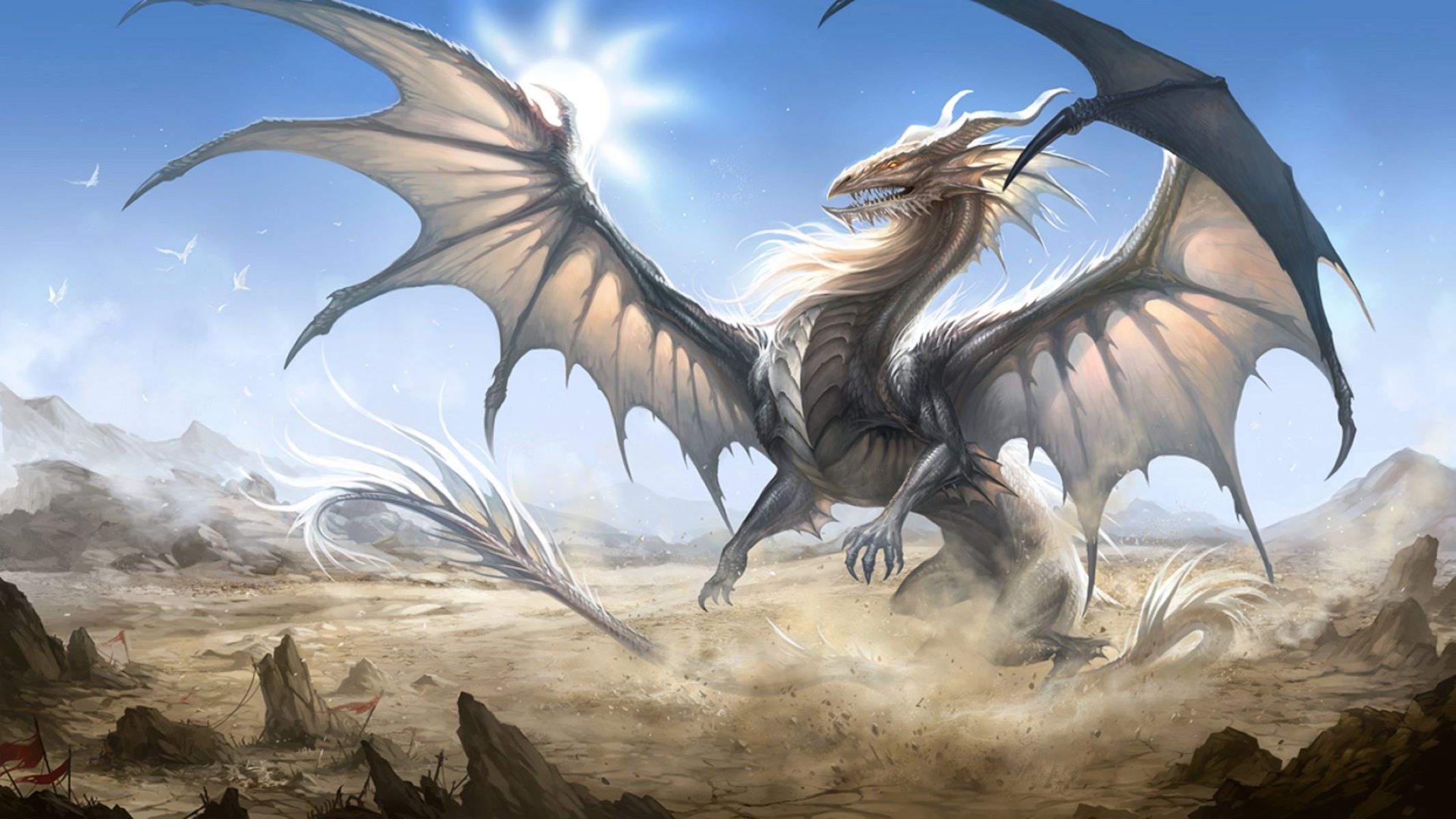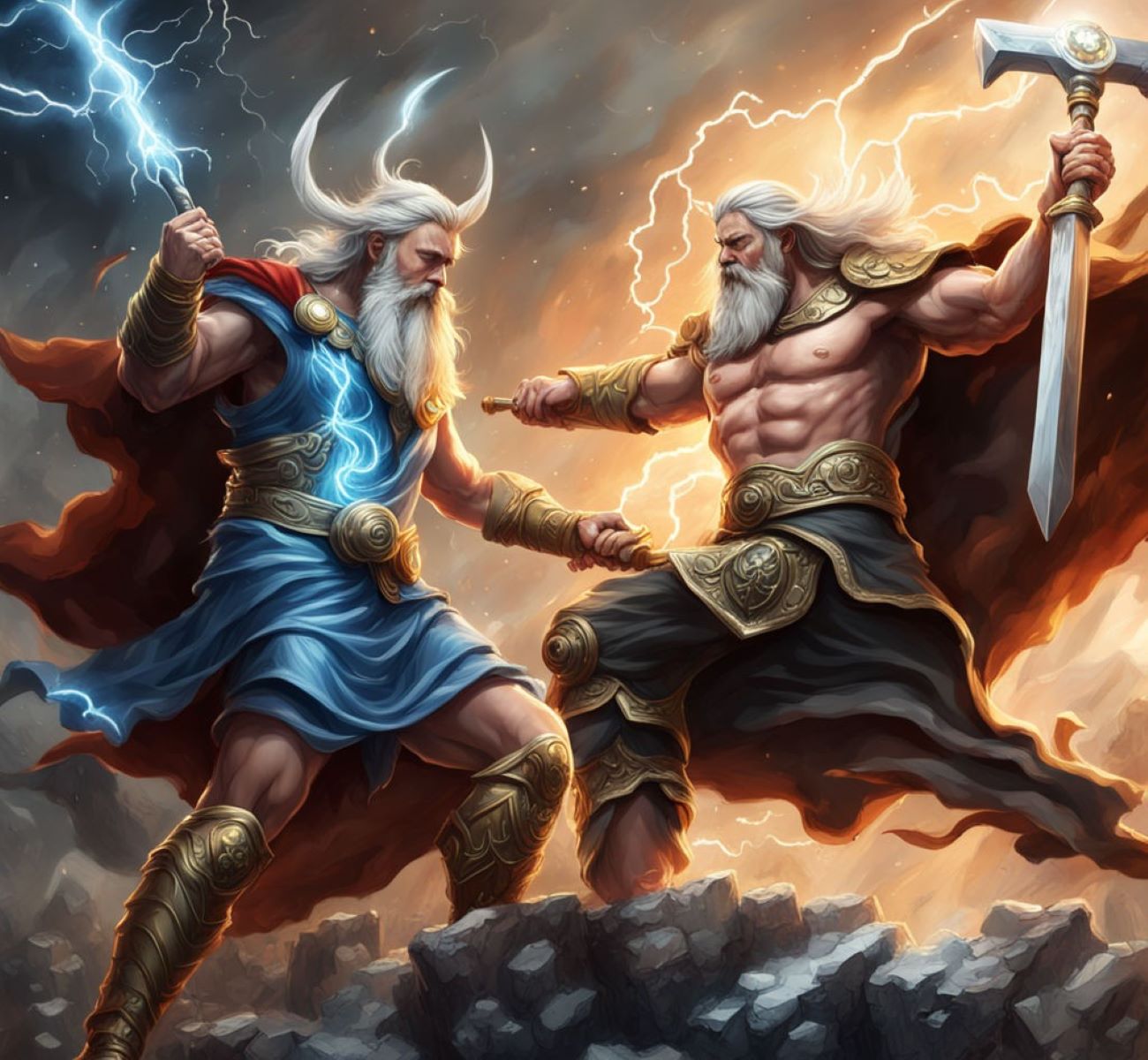Home>Pets & Animals>Dragon Vs. Wyvern: Unveiling The Epic Differences!


Pets & Animals
Dragon Vs. Wyvern: Unveiling The Epic Differences!
Published: February 18, 2024
Discover the key distinctions between dragons and wyverns, and learn about their fascinating traits and behaviors. Explore the captivating world of pets and animals with our in-depth comparison.
(Many of the links in this article redirect to a specific reviewed product. Your purchase of these products through affiliate links helps to generate commission for Regretless.com, at no extra cost. Learn more)
Table of Contents
Introduction
Dragons and wyverns have long captured the imagination of people across cultures and time periods. These mythical creatures have been revered in folklore, literature, and art, often symbolizing power, wisdom, and danger. While both are formidable beasts with reptilian features and the ability to take flight, there are distinct differences between them that set them apart in the realm of mythical creatures.
Dragons are often depicted as massive, serpentine creatures with four legs and a pair of wings. They are known for their intelligence, magical abilities, and often possess the power of speech. In contrast, wyverns are characterized by their more compact, agile bodies, two legs, and a pair of wings. Their appearance is often more reminiscent of a giant, winged lizard.
Throughout history, these creatures have sparked the imagination of storytellers, artists, and enthusiasts, leading to a rich tapestry of myths and legends that continue to captivate audiences today. In this article, we will delve into the fascinating world of dragons and wyverns, exploring their anatomy, flight abilities, fire-breathing capabilities, and cultural significance to unveil the epic differences between these legendary creatures.
Anatomy and Physical Characteristics
Dragons are often depicted as colossal, serpentine creatures with imposing physical prowess. They typically possess four powerful legs, each tipped with formidable claws, and a pair of majestic wings capable of carrying their massive bodies through the skies. The scales adorning their bodies are said to be as tough as steel, providing them with unparalleled protection in battle. Their heads are adorned with sharp horns and adorned with piercing eyes that exude an air of ancient wisdom and intelligence.
In contrast, wyverns boast a more compact yet equally formidable physique. These creatures are characterized by their two powerful hind legs, each equipped with razor-sharp talons, and a pair of membranous wings that enable swift and agile flight. Their elongated tails often end in a barbed tip, adding to their menacing appearance. While their overall build may be less imposing than that of dragons, wyverns are no less fearsome in their own right, exuding a sense of predatory grace and lethal capability.
Both dragons and wyverns are often depicted with reptilian features, including scaly skin that ranges in color from earthy tones to vibrant hues, adding to their mystique and allure. Their formidable appearances have been immortalized in countless works of art and literature, capturing the imagination of audiences and inspiring awe and wonder.
The differences in their physical characteristics are not only evident in their appearances but also in their behavioral traits. Dragons are often portrayed as wise and noble creatures, capable of complex thoughts and emotions. In contrast, wyverns are often depicted as more primal and instinct-driven, embodying the raw power and predatory nature of their kind.
In essence, while both creatures share reptilian traits and the ability to take flight, their physical characteristics and behavioral nuances set them apart, contributing to the rich tapestry of mythical creatures that have enthralled generations with their captivating presence.
Flight Abilities
The flight abilities of dragons and wyverns are a defining aspect of their mythical prowess, adding to their awe-inspiring presence and formidable nature. Both creatures are renowned for their mastery of the skies, each employing distinct techniques and adaptations to soar through the heavens.
Dragons, with their colossal wingspans and powerful physique, are often depicted as majestic aerial predators. The sheer size and strength of their wings allow them to achieve sustained flight, effortlessly gliding through the air with an air of regal grace. Their ability to maneuver with precision and agility despite their massive frames is a testament to their mastery of the skies. In many tales, dragons are revered for their ability to soar to great heights, surveying their domains with an unmatched sense of authority and dominion.
In contrast, wyverns exhibit a more agile and dynamic approach to flight. Their compact yet muscular bodies, coupled with their membranous wings, enable them to execute swift and acrobatic aerial maneuvers. Wyverns are often portrayed as adept hunters, utilizing their aerial agility to outmaneuver prey and adversaries alike. Their flight patterns are characterized by sudden dives, sharp turns, and swift ascents, reflecting their predatory nature and lethal prowess in the skies.
While both creatures possess the ability to take flight, their differing flight styles and techniques reflect their distinct roles in mythical lore. Dragons embody an air of ancient wisdom and authority, their flight exuding a sense of power and majesty. In contrast, wyverns epitomize predatory grace and agility, their aerial prowess serving as a testament to their lethal capabilities in the natural world.
The portrayal of dragons and wyverns in flight serves as a captivating testament to the enduring allure of these mythical creatures. Whether soaring with regal elegance or executing daring aerial feats, their flight abilities contribute to the rich tapestry of legends and folklore that continues to captivate audiences worldwide.
Fire Breathing
The ability to breathe fire is a legendary trait often associated with dragons and, to a lesser extent, with wyverns. This awe-inspiring ability has been a focal point in countless tales, adding to the creatures' mystique and fearsome reputation. When it comes to fire breathing, dragons and wyverns exhibit distinct methods and characteristics that set them apart in the realm of mythical creatures.
Dragons, renowned for their mastery of elemental forces, are often depicted as possessing the ability to unleash torrents of searing flames from their maws. The intensity and sheer destructive power of a dragon's breath are legendary, capable of laying waste to entire landscapes and striking fear into the hearts of all who witness it. The flames they unleash are often portrayed as an extension of their inner power, a manifestation of their elemental might and mystical prowess. In many tales, the breath of a dragon is likened to a force of nature, an unstoppable inferno that engulfs everything in its path.
In contrast, wyverns, while possessing a similar ability, exhibit a more focused and precise approach to fire breathing. Their breath is often portrayed as a concentrated stream of scorching flames, akin to a fiery lance that can immolate targets with deadly accuracy. The flames they unleash are characterized by their intense heat and incendiary force, reflecting the predatory nature and lethal precision of these formidable creatures. In many depictions, the fire breath of a wyvern is likened to a swift and devastating strike, capable of incapacitating or vanquishing adversaries with ruthless efficiency.
The differences in their fire-breathing abilities not only contribute to the distinct personas of dragons and wyverns but also add to the rich tapestry of mythical lore surrounding these creatures. Whether unleashing torrents of inferno or precise streams of scorching flames, the ability to breathe fire serves as a testament to the awe-inspiring and fearsome nature of these legendary beasts.
The portrayal of fire-breathing abilities in dragons and wyverns has captivated audiences for generations, inspiring awe and wonder while cementing the creatures' status as iconic figures in the realm of mythical lore.
Cultural Significance
The cultural significance of dragons and wyverns transcends geographical boundaries and historical epochs, permeating diverse mythologies, folklore, and artistic expressions. These mythical creatures have left an indelible mark on human culture, shaping belief systems, inspiring heroic tales, and serving as potent symbols of power, wisdom, and danger.
In many Eastern cultures, dragons are revered as benevolent and wise beings, often associated with the elements of water and air. They are regarded as symbols of imperial authority and good fortune, with their images adorning imperial regalia, architectural structures, and traditional artworks. Dragons are deeply ingrained in the cultural fabric of societies such as China, Japan, and Korea, where they are celebrated during vibrant festivals and revered as protectors of the natural world.
In Western folklore and medieval heraldry, dragons are often depicted as malevolent adversaries, embodying chaos and the forces of darkness. They are frequently portrayed as formidable foes to be vanquished by valiant knights and noble heroes. The image of a dragon guarding a hoard of treasure has become an enduring motif in Western literature and fantasy, symbolizing the triumph of virtue over greed and tyranny.
Wyverns, while less prevalent in cultural depictions compared to dragons, have also left their mark on mythology and heraldic symbolism. In European folklore, wyverns are often associated with heraldry, serving as emblems of strength and guardianship. Their iconic presence on coats of arms and medieval architecture reflects their enduring significance as symbols of protection and valor.
The cultural significance of dragons and wyverns extends beyond mythology and folklore, permeating contemporary popular culture. From epic fantasy novels and blockbuster films to immersive video games and intricate artworks, these mythical creatures continue to captivate audiences worldwide. Their enduring appeal serves as a testament to their timeless allure and enduring impact on human imagination.
In essence, the cultural significance of dragons and wyverns encompasses a rich tapestry of beliefs, traditions, and artistic expressions that have shaped the collective consciousness of humanity. Their iconic presence in diverse cultural narratives serves as a testament to their enduring relevance and their status as timeless symbols of myth and legend.
Conclusion
In conclusion, the comparison between dragons and wyverns unveils a rich tapestry of mythical lore, showcasing the captivating differences and shared allure of these legendary creatures. From their distinctive anatomical features to their awe-inspiring flight abilities and fearsome fire-breathing capabilities, dragons and wyverns have left an indelible mark on human culture and imagination.
The physical characteristics of dragons, with their colossal frames, majestic wings, and imposing presence, stand in contrast to the more agile and predatory build of wyverns. These differences not only reflect their unique personas but also contribute to their diverse cultural representations and symbolic significance.
In the realm of flight, dragons embody regal elegance and authority, soaring through the skies with a sense of ancient wisdom and power, while wyverns epitomize predatory grace and lethal agility, executing daring aerial feats with lethal precision. Their distinct approaches to flight reflect their roles as iconic aerial predators in mythical lore.
The ability to breathe fire serves as a defining trait for both creatures, with dragons unleashing torrents of searing flames as a manifestation of their elemental might, while wyverns exhibit a more focused and precise approach, delivering scorching streams of fire with lethal accuracy. These differences in fire-breathing abilities add to the captivating personas of dragons and wyverns, cementing their status as iconic figures in the realm of mythical lore.
The cultural significance of dragons and wyverns, spanning across diverse mythologies, folklore, and artistic expressions, underscores their enduring impact on human culture. From revered symbols of imperial authority and good fortune in Eastern cultures to malevolent adversaries in Western folklore, these mythical creatures have shaped belief systems, inspired heroic tales, and left an indelible mark on human imagination.
In essence, the comparison between dragons and wyverns unveils a captivating journey through the realms of myth and legend, showcasing the timeless allure and enduring significance of these legendary creatures. Their rich tapestry of differences and shared symbolism serves as a testament to their timeless appeal and their status as iconic figures in the pantheon of mythical beings.














